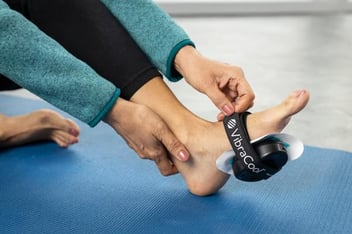Plantar Fasciitis
What is plantar fasciitis?
Plantar fasciitis is one of the most common causes of foot/heel pain, resulting from overuse. 1 in 10 people will suffer from plantar fasciitis in their lifetime.
It involves inflammation of a thick band of tissue that runs across the bottom of the foot and connects the heel bone to your toes (plantar fascia).
Plantar fasciitis commonly causes stabbing pain that usually occurs with your first steps in the morning. As you get up and move, the pain normally decreases, but it might return after long periods of standing or when you stand up after sitting.
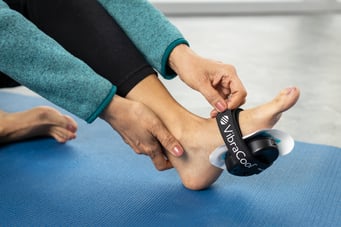
Treating plantar fasciitis
Most people who have plantar fasciitis recover in several months with conservative treatment, including resting, icing the painful area, stretching, or mechanically flexing the foot during sleep (e.g. a boot). Research supports icing and stretching as the most effective initial treatments.
How to treat plantar fasciitis with VibraCool
|
Step 1Freeze ice packs. |
Step 2Thread strap through unit and ice. |
Step 3Strap to foot, and turn on. |
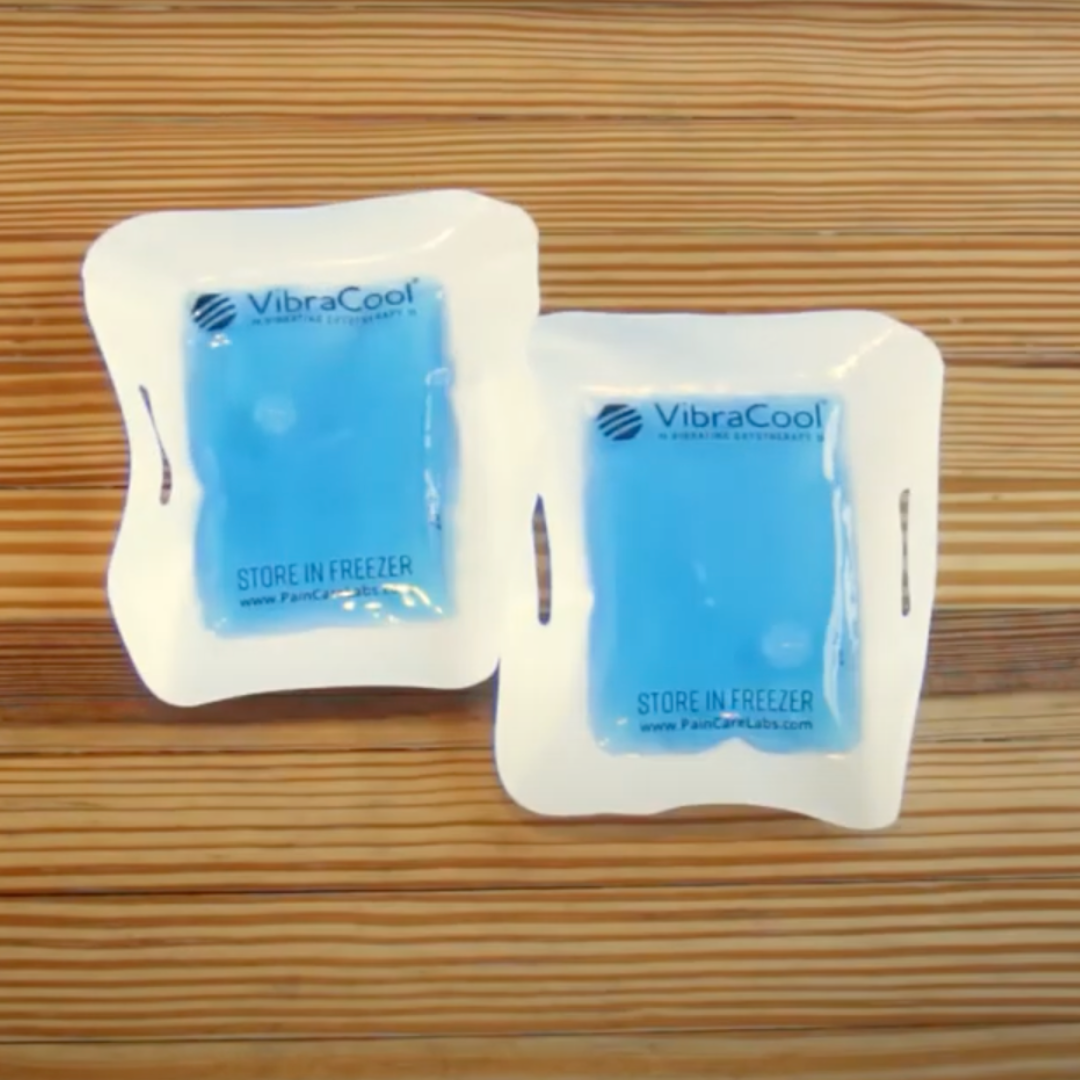 |
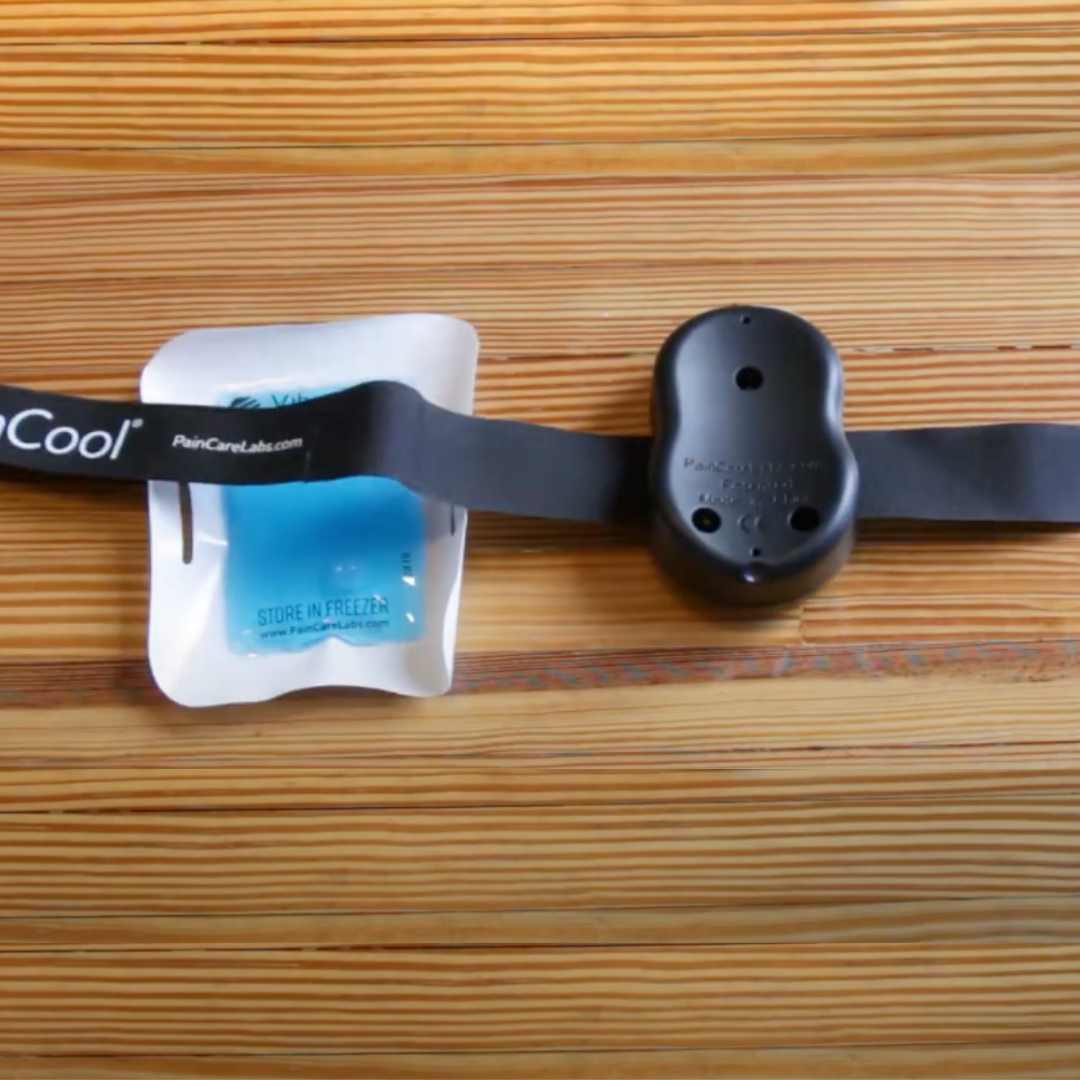 |
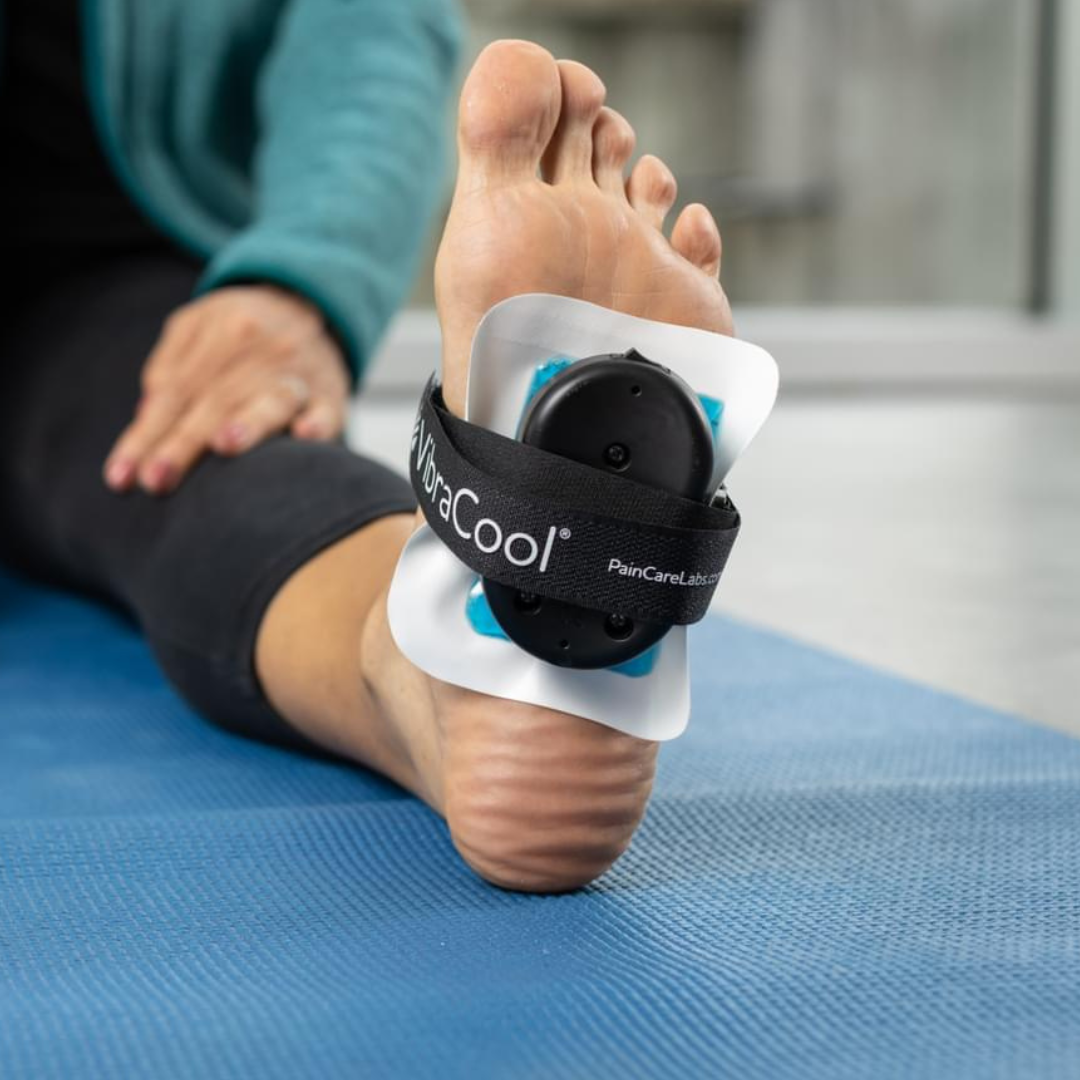 |
| Place the ice packs in the freezer for about 1 hour until frozen solid. | Thread the strap through the vibration unit and the ice pack. | Place VibraCool® on foot, then secure the hook & loop strap. Leave in place for 20 minutes. |
Watch the video on how to use the VibraCool Plantar unit.
Treating other foot pain (gout, bunions, plantar warts, and heel spurs).
Most people who have plantar fasciitis recover in several months with conservative treatment, including resting, icing the painful area and stretching. While boots, sleeping with tilted socks and stretching are recommended, ice has the best data. Shock wave therapy can break up the fascia - VibraCool can be placed proximally during the sometimes painful treatment, then used with ice and vibration to cool down the fascia and keep the area loose afterwards.
A nice review is here.
Resources
There are two schools of thought in treatment. One is to reduce inflammation with ice. One is to stretch and lengthen the fascia that has gotten swollen and tight. Interventions like boots, shock wave therapy, and socks to stretch the fascia have been tried with about 30% success with placebo, and 35% active. Stretching and orthotics alone help in about 3 months (and using electrical stim to twitch the muscles to tire them out does nothing to improve it).
Rather than twitching muscles with electrical stimulation, the light high frequency mechanical stimulation of VibraCool separates muscles faster than stretching, and stimulates blood flow. Of course, other options are to lose extra weight, walk and carry less for a while, and get better arch support.
Other painful foot conditions include gout, plantar wart pain, bunion pain, and heel spur pain. VibraCool® provides wearable pain relief, with mechanical stimulation (M-stim) technology that can block pain on contact and can be used during icing and stretching exercises. VibraCool® Plantar’s vibration unit, with its dual-curve design, fits into the arch of the foot. Its velcro strap and specially-designed ice packs fit comfortably on the foot, and secure the vibration unit in place.
Testimonials:
Dr. D.D. - "Our patients routinely find their plantar fasciitis pain is reduced from a 4/10 to a 2/10, which is a victory. Some days are pain free."
Richard George - "I have been suffering for PF for just over 2 years. I have gone from orthotics, to a surgical procedure of injection of my own blood cells (and then in a boot for 4 weeks), new orthotics combined with anti-inflammatory medicine, physical therapy (with stretches and exercises), and ultrasound therapies. So yeah I have been through a lot. After using [VibraCool] for about a month, I really am feeling the results. The consistency of the ice and vibration affords me relief at the end of the day and allows me to be pain free the next morning for that day. In combination with my exercises and stretches, I think I am near normal."
Danu C., RN - “I wasn’t thrilled by the sensation of the VibraCool, but after a week or so I realized that just from using it that one time, my plantar fasciitis pain was significantly less. I continue to use it periodically and I realized today that for several days now I’ve been getting up in the morning without any hobbling or pain. Could be coincidence, but it’s pretty amazing because the healing was going super slowly before.”
Causes & risk factors for acute and chronic foot pain.
Causes
- Overuse
- Limb length discrepancy
- Increased activity
- Running
- Weight
Risk factors
- People aged 40 to 60.
- Sports and activities add stress to the heel and its attached tissue.
- Distance runners
- Ballet Dancers
- Aerobic dance
- Certain foot mechanics
- Flat feet
- High arches
- Abnormal walking patterns
- Limb length differences
- Certain occupations spend long hours standing.
- Manufacturing workers
- Healthcare workers
- Teachers
- Hospitality workers
- Event staff workers
